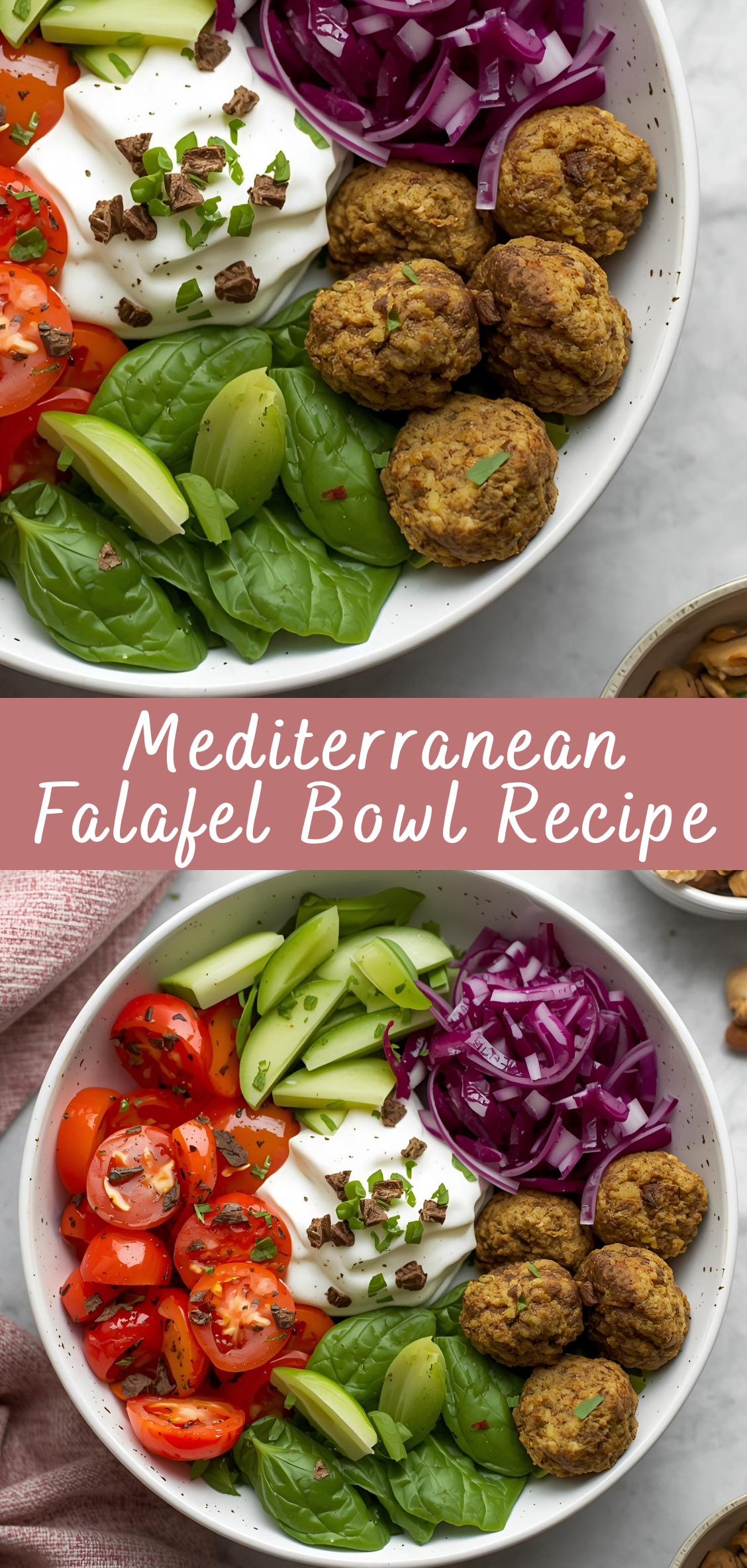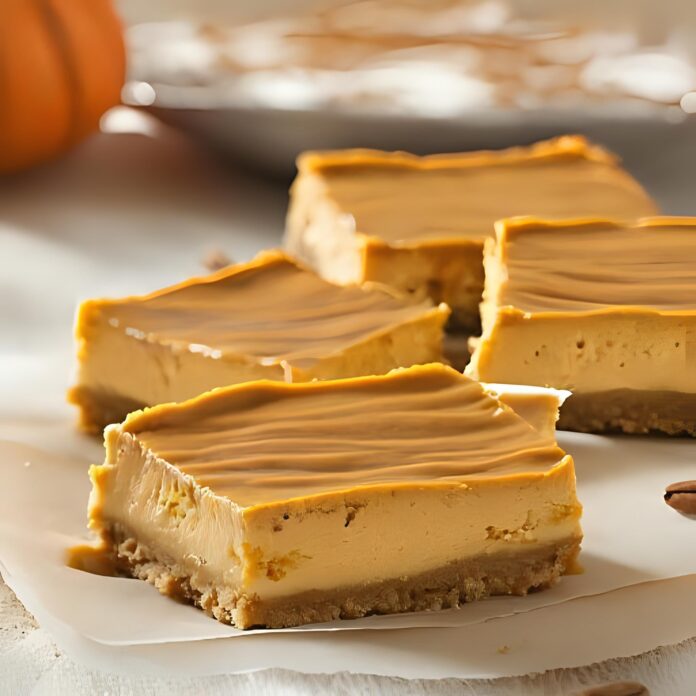Mediterranean Falafel Bowl: A Flavor-Packed, Plant-Based Powerhouse
In the world of nourishing, flavor-forward meals, few dishes strike the perfect balance between comfort, health, and culinary excitement like the Mediterranean Falafel Bowl. Rooted in centuries-old Middle Eastern and Mediterranean traditions, this vibrant, plant-based meal brings together crispy falafel, crisp vegetables, hearty grains, tangy sauces, and fresh herbs to create a bowl that’s as satisfying to eat as it is beautiful to serve.

The beauty of a falafel bowl lies in its harmony of textures and flavors: golden-brown falafel with a tender interior; creamy hummus and tzatziki; crunchy cucumbers and vibrant tomatoes; fluffy grains like quinoa or bulgur; and a sprinkle of fresh parsley or mint to finish. Each bite is a medley of savory, fresh, spicy, and tangy, transporting you to the heart of Mediterranean street food culture.
Falafel—deep-fried balls or patties made from chickpeas or fava beans blended with herbs and spices—has long been a staple of Middle Eastern cuisine. In this modern falafel bowl, the traditional street food is reimagined as part of a wholesome, balanced meal that fits a variety of lifestyles. Whether you’re vegetarian, vegan, gluten-free, or simply someone who enjoys bold, colorful meals, a Mediterranean falafel bowl can be endlessly customized to suit your preferences.
Whether you’re new to plant-based cooking or a longtime fan of Mediterranean food, this recipe article is designed to help you take your falafel game to the next level. It’s not just about following steps—it’s about understanding the flavors, textures, and cultural roots that make this dish so beloved across the globe.
So grab your chickpeas, preheat your oven (or fire up your fryer), and get ready to discover the art of the perfect Mediterranean Falafel Bowl. By the end of this guide, you’ll not only have a complete recipe, but a customizable blueprint for one of the most flavorful and nourishing meals you can make.
Step-by-Step Instructions for a Mediterranean Falafel Bowl
Step 1: Gather Your Ingredients and Tools
Before diving into preparation, set yourself up for success by assembling all your ingredients and tools. A falafel bowl consists of several components, so organization is key.
A. Ingredients
For the Falafel:
-
1 cup dried chickpeas (do not use canned)
-
½ medium onion, roughly chopped
-
3–4 garlic cloves
-
½ cup fresh parsley leaves
-
½ cup fresh cilantro leaves
-
1 teaspoon ground cumin
-
1 teaspoon ground coriander
-
½ teaspoon cayenne pepper or red chili flakes (optional)
-
1 teaspoon salt
-
½ teaspoon baking soda
-
1 tablespoon lemon juice
-
2–3 tablespoons all-purpose flour or chickpea flour (as needed)
-
Neutral oil, for frying or baking
For the Bowl Base:
-
1 cup cooked quinoa, bulgur, couscous, or brown rice
-
2 cups mixed greens (arugula, spinach, romaine, or spring mix)
-
½ cup chopped cucumber
-
½ cup cherry tomatoes, halved
-
¼ cup red onion, thinly sliced
-
¼ cup Kalamata olives, pitted (optional)
-
¼ cup crumbled feta cheese (optional)
For the Sauces:
Classic Tahini Sauce:
-
½ cup tahini
-
2–3 tablespoons lemon juice
-
1 garlic clove, minced
-
2–4 tablespoons cold water (adjust consistency)
-
Salt to taste
Optional Tzatziki Sauce (for non-vegan):
-
1 cup plain Greek yogurt
-
½ cucumber, grated and drained
-
1 tablespoon lemon juice
-
1 tablespoon olive oil
-
1 garlic clove, minced
-
1 tablespoon chopped dill or mint
-
Salt and pepper
Optional Hummus (homemade or store-bought):
-
1½ cups cooked chickpeas
-
¼ cup tahini
-
2–3 tablespoons lemon juice
-
1 garlic clove
-
Salt, olive oil, cumin to taste
B. Tools Needed
-
Food processor
-
Mixing bowls
-
Large frying pan or baking sheet
-
Slotted spoon (if frying)
-
Parchment paper (if baking)
-
Fine-mesh strainer (for draining soaked chickpeas)
-
Sharp knife and cutting board
-
Citrus juicer or reamer
Step 2: Prepare the Falafel Mixture
The star of this dish, falafel is traditionally made with soaked dried chickpeas — not canned — to achieve the best texture.
Instructions:
A. Soak the Chickpeas:
-
Place 1 cup dried chickpeas in a large bowl.
-
Cover with several inches of cold water and soak overnight (12–24 hours).
-
After soaking, drain thoroughly and pat dry. The chickpeas will double or triple in size.
Do not cook the chickpeas! The raw soaked chickpeas are what give falafel their signature texture.
B. Blend the Mixture:
-
In a food processor, combine soaked chickpeas, onion, garlic, parsley, and cilantro.
-
Add cumin, coriander, cayenne (if using), salt, lemon juice, and baking soda.
-
Pulse in short bursts, scraping the sides as needed. The texture should be coarse but well-combined — like damp sand. It should hold together when pressed but not be pureed.
C. Rest the Mixture:
-
Transfer to a bowl, cover, and refrigerate for 30 minutes to 1 hour. This allows the flavors to meld and the mixture to firm up.
D. Add Flour (If Needed):
-
If the mixture feels too wet or crumbly, add 1–2 tablespoons of flour at a time until it holds together when formed into balls.
Step 3: Shape and Cook the Falafel
You can fry, bake, or air-fry falafel depending on your preference.
A. Shape the Falafel:
-
Use wet hands or a small cookie scoop to form 1–1.5 inch balls or slightly flattened discs. Aim for 12–15 falafel from this recipe.
B. Cooking Options:
1. Pan-Fried (Traditional Method):
-
Heat 1 inch of oil in a skillet over medium-high heat (around 350°F / 175°C).
-
Fry falafel in batches, without overcrowding, for 2–3 minutes per side until golden brown and crisp.
-
Remove with a slotted spoon and place on paper towels to drain excess oil.
2. Baked:
-
Preheat oven to 400°F (200°C).
-
Place falafel on a parchment-lined baking sheet.
-
Brush or spray with olive oil.
-
Bake for 20–25 minutes, flipping halfway, until golden brown and crisp on the outside.
3. Air-Fried:
-
Preheat air fryer to 375°F (190°C).
-
Lightly spray falafel with oil.
-
Cook in a single layer for 10–12 minutes, flipping halfway through.
Texture Tip: Fried falafel will always be the crispiest, but baking or air-frying reduces oil and still yields excellent results.
Step 4: Prepare the Bowl Components
While the falafel cooks, prep the rest of the bowl ingredients.
A. Cook Your Grain Base:
-
Prepare 1 cup dry quinoa, bulgur, couscous, or brown rice according to package instructions.
-
Fluff with a fork and season lightly with salt, lemon zest, or olive oil if desired.
B. Chop Fresh Veggies:
-
Dice cucumbers, tomatoes, and red onion.
-
Tear greens into bite-sized pieces.
-
Slice olives and crumble feta (if using).
Pro Tip: For extra freshness, toss chopped veggies with lemon juice, olive oil, salt, and a pinch of sumac.
Step 5: Make the Sauces
Sauces add richness, acidity, and creaminess — they’re essential to rounding out the bowl.
A. Tahini Sauce:
-
In a bowl, whisk together tahini, lemon juice, garlic, and a pinch of salt.
-
Add water 1 tablespoon at a time until desired consistency is reached.
-
Taste and adjust seasoning.
B. Optional Tzatziki (Dairy-Based):
-
Grate cucumber and squeeze out excess water.
-
Mix with Greek yogurt, lemon juice, garlic, olive oil, and herbs.
-
Chill before serving.
C. Optional Hummus:
-
Blend chickpeas, tahini, lemon juice, garlic, and olive oil until creamy.
-
Add water or aquafaba (chickpea water) to loosen if needed.
-
Season with cumin and salt to taste.
Step 6: Assemble the Mediterranean Falafel Bowl
Now it’s time to build your masterpiece.
Assembly Instructions:
-
Start with a base of grains and greens.
-
Arrange a handful of chopped veggies in clusters or rows.
-
Add 4–5 falafel per bowl (warm or room temp).
-
Dollop with tahini sauce, tzatziki, or hummus.
-
Sprinkle with feta, herbs, or toasted sesame seeds.
-
Finish with a drizzle of olive oil and fresh lemon juice.
Step 7: Serve and Enjoy
Serve immediately while the falafel is still crisp. Offer extra lemon wedges, pita bread, or pickled turnips on the side for a true Mediterranean experience.
Optional Touch: Warm pita on the side turns this bowl into a full mezze experience.
Mediterranean Falafel Bowl Recipe
In the world of nourishing, flavor-forward meals, few dishes strike the perfect balance between comfort, health, and culinary excitement like the Mediterranean Falafel Bowl. Rooted in centuries-old Middle Eastern and Mediterranean traditions, this vibrant, plant-based meal brings together crispy falafel, crisp vegetables, hearty grains, tangy sauces, and fresh herbs to create a bowl that’s as satisfying to eat as it is beautiful to serve.
Ingredients
- For the Bowl:
- 12–16 falafel (store-bought or homemade)
- 2 cups cooked rice, quinoa, or couscous
- 1 cup hummus
- 1 cup cherry tomatoes, halved
- 1 cup cucumber, diced
- 1/2 cup red onion, thinly sliced
- 1/2 cup kalamata olives, pitted and sliced
- 1 cup shredded lettuce or chopped mixed greens
- 1/2 cup crumbled feta cheese (optional)
- Fresh parsley or mint for garnish
- Lemon wedges, for serving
- For the Tahini Sauce (optional but recommended):
- 1/3 cup tahini
- 2–3 tbsp lemon juice
- 1 tbsp olive oil
- 1–2 tbsp warm water (to thin)
- 1 garlic clove, minced
- Salt, to taste
Instructions
1. Prepare Falafel:
- Store-bought: Cook according to package instructions (usually baked or pan-fried).
- Homemade: You can make falafel from scratch using chickpeas, herbs, garlic, onion, and spices blended together and pan-fried or baked. Let me know if you want a homemade falafel recipe too.
2. Make the Tahini Sauce:
- Whisk together tahini, lemon juice, olive oil, garlic, and a pinch of salt. Add warm water gradually until desired consistency is reached (creamy but pourable).
3. Assemble the Bowls:
In each bowl, layer:
- 1/2 cup cooked grain (rice, couscous, or quinoa)
- A handful of shredded lettuce or greens
- 3–4 falafel (cut in half if large)
- Spoonfuls of cherry tomatoes, cucumber, onion, olives, and feta
- 2–3 tbsp hummus
- Drizzle with tahini sauce
- Garnish with chopped parsley or mint
- Serve with lemon wedges on the side
Notes
- Make it vegan: Skip the feta cheese or use plant-based feta.
- Add protein: Add a hard-boiled egg or grilled halloumi.
- Meal prep tip: Store components separately and assemble when ready to eat.
- Crunch factor: Add pita chips, toasted pine nuts, or roasted chickpeas on top.



